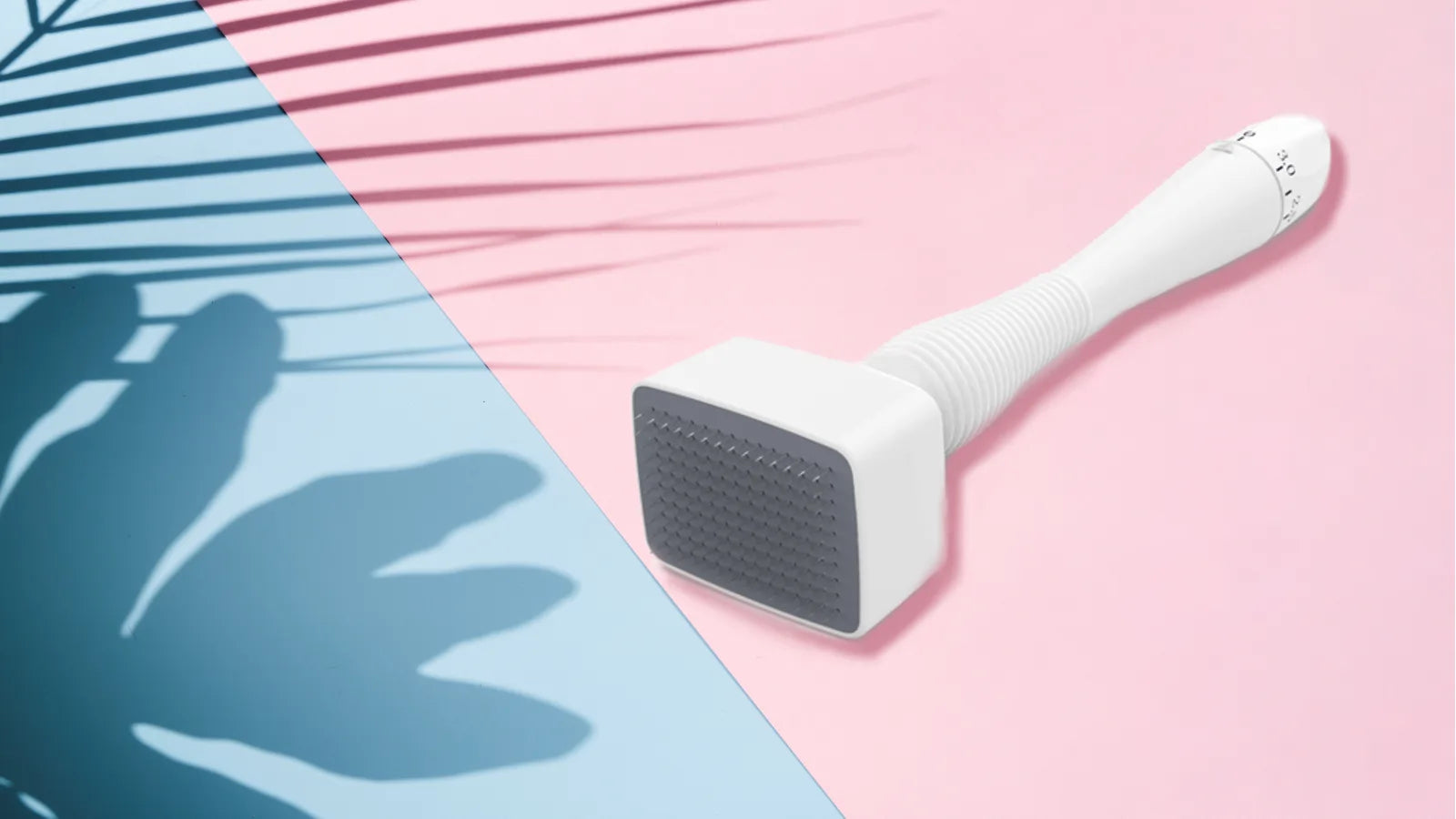Shine bright like a diamond: The derma stamp is a gentle and efficient solution to make your skin look smooth and beautiful. Adjustable needle length - from 0.5mm to 3.00mm. Cone-shaped individual titanium pins. Protective needle cap.

Welcome to your ultimate derma stamping guide! This post will cover everything you need to know about this treatment, including what a derma stamp is, what it does, how to use it, and much more.
Derma stamping is a type of microneedling that employs a stamp-like device equipped with tiny, thin needles. Unlike typical rollers or pens, a derma stamp is pressed vertically into the skin, generating micro-channels that activate the body's natural healing process.
This technique increases collagen and elastin formation, which helps to renew the skin and enhance its texture and tone. Derma stamping is perfect for addressing particular issues such as acne scars, fine lines or wrinkles, and smaller regions of pigmentation.
It offers a more controlled and precise approach, making it a popular choice for both professionals and those doing microneedling at home.
The microneedling stamping technique offers various benefits, making it the perfect addition to your skincare routine. Here's why it is so popular:
Overall, derma stamping is a gentle yet effective method for rejuvenating your skin and improving your overall complexion, all from the comfort of your own home. With consistent use, it delivers long-lasting results, boosts skin confidence, and helps you maintain a youthful, radiant glow.
Getting started with your microneedling stamp at home is easy and simple, especially if you follow these steps:
Before you begin, ensure that your derma stamp and skin are completely clean. To eliminate the risk of infection, disinfect the stamp with 70% isopropyl alcohol.
Use a mild cleanser to remove debris, oil, and makeup from your face. Pat dry with a clean towel.
If you're sensitive or using longer needles (more than 0.5mm), apply a numbing lotion 20 to 30 minutes before stamping. Before you begin, make sure it is entirely removed.
Press the derma stamp vertically into the skin, then lift. Don't drag or twist the tool. Repeat this process across the treatment area, making sure not to overlap too many times in one location.
To nourish and moisturize your skin, apply a soothing serum, such as hyaluronic acid or peptides, right after stamping.
Avoid makeup, sun exposure, and harsh skincare products for at least 24 to 48 hours. Keep your skin hydrated and protected with SPF.
When done consistently, derma stamping can result in noticeable improvements in skin tone, texture, and overall health. It's a simple yet incredibly efficient way to revitalize your skin naturally. Over time, your complexion will seem brighter, firmer, and smoother, with better product absorption and apparent long-term improvements.

It's important to understand the difference between a derma stamp and a roller because each has distinct benefits and meets various treatment needs. While both methods fall under the microneedling category and aid in collagen formation, their interactions with the skin differ dramatically.
Choosing the right equipment for your at-home microneedling regimen is determined by your skincare goals, the regions to be treated, and the amount of accuracy you require. Here's a breakdown:
Ultimately, both techniques promote collagen and increase skin health, but your choice is based on your skincare goals. Suppose you want focused treatment with minimal discomfort. In that case, a derma stamp may be a better option, especially if you utilize gold-standard devices such as the Dr. Pen Derma Stamp for safe, at-home application.
Derma stamping is a powerful, customized method of microneedling that delivers noticeable outcomes with minimal discomfort and downtime. If you want to start facial stamping, Dr. Pen may be the perfect solution for you. Check out our derma stamp or contact our experts for help finding the right system for help finding the right system for you!
Best Ingredients for Younger-Looking Skin
Discover the most effective anti-aging skincare ingredients — retinol, peptides, vitamin C, niacinamide, and more — for firmer, smoother, younger-looking skin.
All About Microneedling With Exosomes
Discover how microneedling with exosomes accelerates skin repair, boosts collagen, reduces wrinkles, and enhances glow. Learn benefits, safety, and results.
The Ultimate Guide to Microneedling Serums for Glowing Skin
Learn how microneedling serums boost collagen, improve skin texture, and enhance glow. Discover the best ingredients and how to choose the right serum.